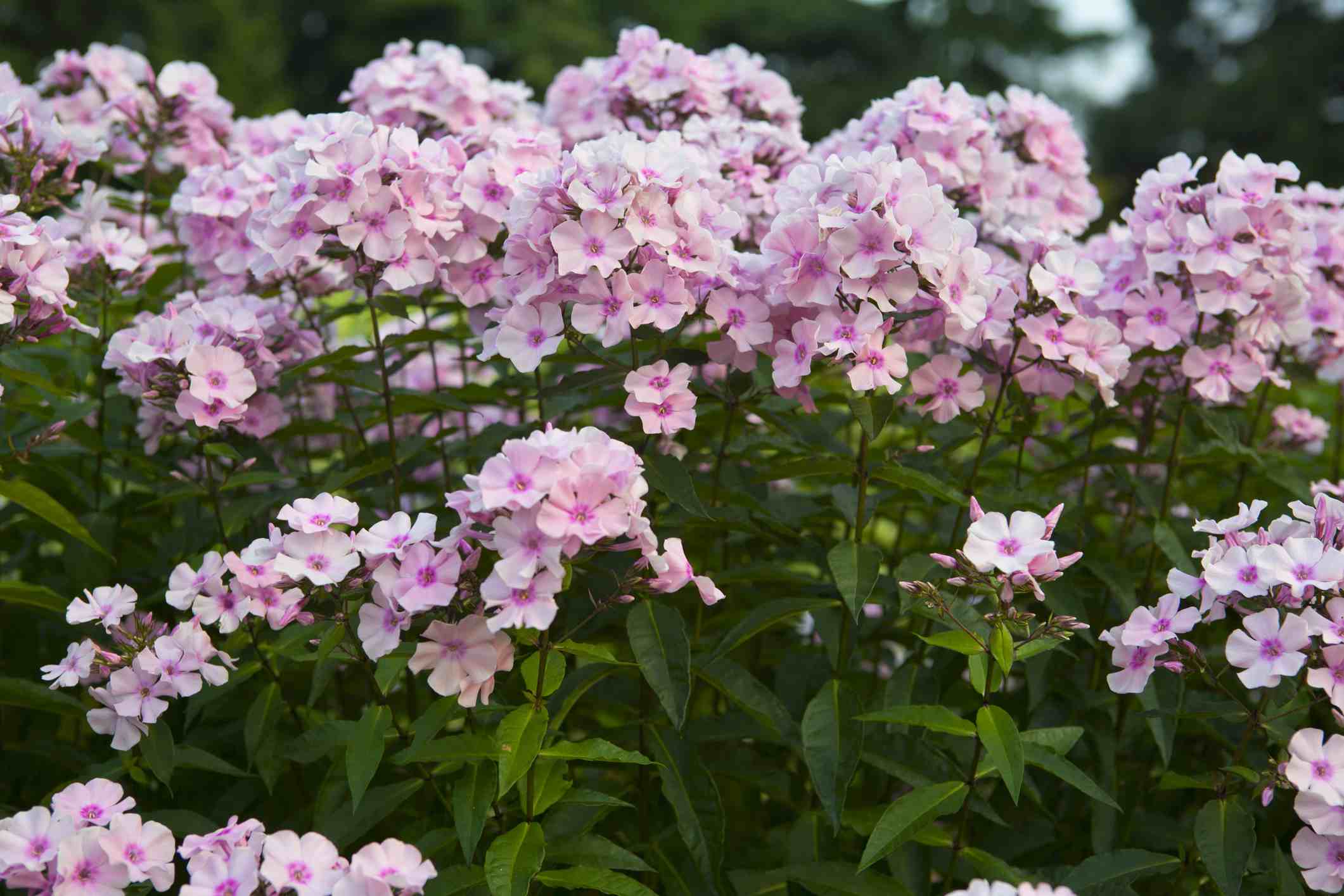Phlox are iconic flowering perennials loved for their dense, colorful blooms However, some look-alike flowers actually aren’t phlox at all One in particular is an invasive plant that can threaten natural habitats. Learning to identify key differences helps avoid mistakes.
The Issue of Look-Alike Flowers
Garden phlox (Phlox paniculata) is a popular border plant grown for its fragrant clusters of flowers in white, pink, red, purple and more Its low-growing cousin, creeping phlox (P subulata), carpets the spring landscape in blue, purple, pink and bi-colored hues.
These garden favorites have long grown wild as well. Wild blue phlox (P. divaricata) can be found across eastern North America in shady forests and woodlands. Prairie phlox (P. pilosa) or wild sweet william displays fuzzy foliage and five-petaled blooms on the prairie.
Given phlox’s beauty, it’s no wonder similar flowers are welcomed by gardeners. But some phlox look-alikes aren’t as benign.
Dame’s Rocket – A Problematic Imposter
One of the most common phlox imposters is dame’s rocket (Hesperis matronalis). This plant may be less familiar by name but recognizable to many from its clusters of showy blooms in white, pink, and purple.
While visibly similar to phlox at first glance, dame’s rocket is not a phlox at all. It is actually a mustard native to Eurasia and was brought to North America as an ornamental garden plant.
This has proven problematic, as dame’s rocket readily escapes cultivated areas. It spreads aggressively and has naturalized across much of the U.S. and Canada. For this reason, many jurisdictions prohibit its sale and urge removal.
Identifying Dame’s Rocket vs Phlox Flowers
It’s easy to mistake dame’s rocket for phlox from a distance. A closer look reveals key differences to tell them apart:
- Petals – Phlox have 5 petals, dame’s rocket has 4
- Flower shape – Phlox are tubular, dame’s rocket are flatter
- Flower clusters – Phlox has open, loose arrangement, dame’s rocket has a dense spike
- Fragrance – Dame’s rocket has a sweet, strong scent unlike phlox
- Bloom time – Dame’s rocket peaks in late spring, phlox peaks in summer
- Plant shape – Dame’s rocket has alternate leaves on erect stems, phlox has opposite leaves
Learning these subtleties helps identify dame’s rocket properly. It’s much less welcome than phlox in natural areas, where it can overwhelm native wildflowers.
How Dame’s Rocket Spreads
Once established, dame’s rocket spreads readily by seeds. A single plant can produce thousands of seeds annually. These seeds germinate in disturbed areas, including gardens.
Wildlife, waterways, mowing, and other forces easily spread seeds beyond intended boundaries. Large monoculture stands often appear along roadways, ditches, and woodland edges.
Vigorous growth shades out and outcompetes native plants. Dame’s rocket grows rapidly in spring and early summer to overtake slower natives. It also releases allelopathic chemicals that suppress neighboring plants.
Controlling and Removing Dame’s Rocket
Eradicating dame’s rocket requires persistence. Hand pulling plants before seed set helps prevent spreading. However, removing root fragments left behind may lead to regrowth.
Mowing or string trimming won’t kill the plant but can prevent seeding if timed right before flowering. Always bag and dispose of cut material rather than composting.
For larger infestations, applying specific herbicides may be necessary. Glyphosate products can be effective when applied in early spring or fall. Follow directions carefully to avoid harming nearby native plants.
Repeating control measures for several years is key to getting dame’s rocket under control. The payoff is preserving habitat for valued native wildflowers like phlox species.
Enjoy Phlox – Avoid Dame’s Rocket
Garden phlox offers plenty of safe options to enjoy these summer-blooming perennials. Seek out native wild blue phlox and prairie phlox to appreciate in wild areas.
But resist the urge to plant dame’s rocket. Its aggressive nature creates issues down the road. By avoiding look-alikes and removing existing stands, gardeners can protect the habitat phlox naturally thrives within.
My Top 5 Longest Blooming Perennials for Sun and a BONUS! Perrenials
FAQ
What flower is similar to phlox?
What looks like phlox but isn’t?
What looks like phlox?
What is the wild flower that looks like phlox?
What colors do Phlox flowers come in?
While the flowers come in many colors, annual phlox is perhaps best known for its brilliant red varieties. Woodland phlox, or Phlox divaricata, is also called wild blue phlox. Known for its blue or periwinkle flowers, this phlox species is more shade tolerant than other phlox species.
What color phlox is best?
Tall varieties are ideal for the back of borders, while shorter types work well in front or as ground cover. Flower Color: Phlox comes in a range of colors, including white, pink, red, purple, and blue. Select colors that complement your existing garden palette.
What flowers go well with Phlox?
Mix with flowering shrubs such as abelia. Phlox is a cottage garden mainstay with varieties that bloom from early spring into fall. It’s flowers come in nearly every hue imaginable, even hard-to-find blue.
Which Phlox has the sweetest tufts of white flowers?
‘Minnie Pearl’ has the sweetest tufts of white blooms atop one-foot stems with glossy green foliage. The snow-white flowers have throats and centers with lilac tinges. Found along a roadside in Mississippi, Plant Delights Nursery cultivated and introduced this phlox variety to the market.
- A Complete Guide to Caring for Yuki Cherry Blossom Shrub - January 23, 2025
- Identifying Red Hot Poker Seeds: What to Look For When Harvesting Torch Lily Pods - January 23, 2025
- A Complete Guide to Harvesting Evening Primrose Seeds - January 23, 2025

